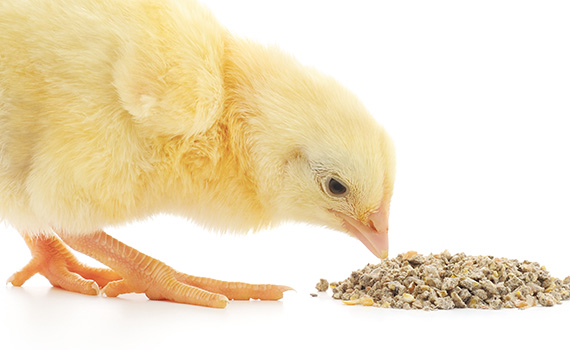Salmonella Enteritidis in feed can be a source for broiler flocks
Feed ingredients and feed have been shown to be sources of Salmonella for broilers and broiler breeders. This is especially important when it comes to Salmonella Enteritidis.
To address this issue, the Southern Poultry Research Group (SPRG) in Georgia created a challenge model to show how one strain, S. Enteritidis, can spread among birds when feed is contaminated and to help evaluate products that can eliminate or reduce the risk.
An easy spreader
Jennie Baxter, lab manager with SPRG, explained that feed can become contaminated from ingredients, Salmonella-positive rodents or insects or if anything in the feed-processing system itself is contaminated with Salmonella. There also could be cross-contamination between feed ingredients.
Baxter noted that Salmonella is “a very, very hardy bug” that is “hard to kill” once it enters a poultry operation. Besides thriving in feed and litter, it also lives on surfaces — countertops and lab benches, for instance — that haven’t been bleached.
One major control step is to prevent feed from spreading Salmonella.
The challenge-model study
To prove that Salmonella from contaminated feed will colonize in flocks, SPRG created a 21-day challenge-model study. The group set up a floor-pen study with eight pens of 20 chicks in each pen.
At 7 days of age the birds were challenged with feed that had just over 100 Salmonella organisms (10^2 or 2 logs) per gram of feed which the birds ate until they were 14 days old.
On day 14 of the study, SPRG investigators took cloacal swabs to evaluate S. Enteritidis colonization in the broilers. On day 21, they collected liver and spleen pools. Ceca samples were also collected on day 21 from 10 birds per pen for S. Enteritidis prevalence and enumeration.
Baxter reported there were 26% S. Enteritidis positives in the liver and spleen pools and 55% positive in the ceca.
This study demonstrated that Salmonella can readily transfer from feed to poultry using this method. “Practical and effective methods must be utilized to avoid Salmonella from entering the feed supply,” she added.
How to prevent feed contamination
Using this model to demonstrate how easily a Salmonella-contaminated feed can infect broilers gives the industry a way to evaluate products that can be added to the feed to reduce this risk to broilers.
First, farms must rigorously apply basic disinfectant measures in the barns and feed mills to help prevent Salmonella from spreading.
If incidence of Salmonella is linked to feed, then the feed mill or the part of the mill where the feed is being contaminated, including the storage area, must be evaluated. While testing feed for Salmonella is not a routine practice, Baxter said it should be considered when “there’s no other known Salmonella source on the farm.”
Baxter also stressed that preventing insects and rodents in feed mills can be important to “significantly cut down on feed contamination.”
This study targeted only one serovar, S. Enteritidis. Baxter said SPRG hopes to study other Salmonella serovars in the future, such as S. Heidelberg, to determine if results are similar.
In the meantime, farms and feed mills must take necessary precautions, such as prevention of cross-contamination and rodent and insect control, to prevent Salmonella from contaminating feed and to reduce the load of the pathogen heading into processing plants.
Posted on May 11, 2022














